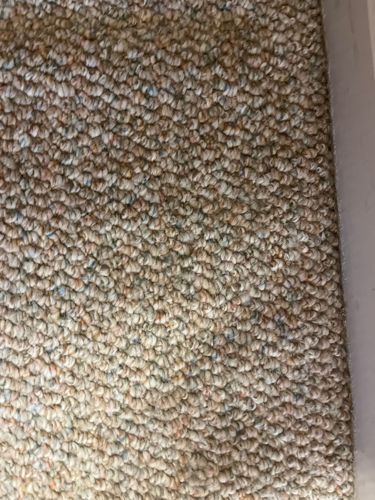Carpet Beetle
Scientific Name: Dermestes lardarius (Larder Beetle) or Anthrenus verbasci (Varied Carpet Beetle) or Attagenus unicolor (Black Carpet Beetle) - specific identification would require a clearer image.
Order & Family: Order: Coleoptera, Family: Dermestidae
Size: Larvae typically range from 2 to 5 mm (0.08 to 0.2 inches) in length. Adults are small, usually between 2 to 4 mm (0.08 to 0.16 inches).

Natural Habitat
Carpet beetles are common household pests. They can be found in carpets, rugs, upholstered furniture, clothing, closets, attics, museums, and anywhere natural fibers or animal products are stored. They prefer dark, undisturbed areas.
Diet & Feeding
Larvae primarily feed on natural fibers such as wool, silk, animal hair, feathers, felt, and furs. They can also consume stored food products like grains, pet food, and dried meat. Adult carpet beetles feed on pollen and nectar.
Behavior Patterns
Carpet beetles undergo complete metamorphosis with egg, larval, pupal, and adult stages. Larvae are the damaging stage, actively feeding on natural fibers and accumulating in dark, undisturbed areas. Adults are not destructive to fabrics; they feed on pollen and nectar outdoors and may fly indoors to lay eggs. They are often found near windows as they are attracted to light.
Risks & Benefits
Risks: Carpet beetle larvae can cause significant damage to household items made of natural fibers, including carpets, clothing, and upholstered furniture, leading to costly repairs or replacements. Some individuals may experience allergic reactions or skin irritation from contact with larval hairs. Benefits: In nature, they play a role as scavengers, breaking down organic matter.
Identified on: 8/12/2025